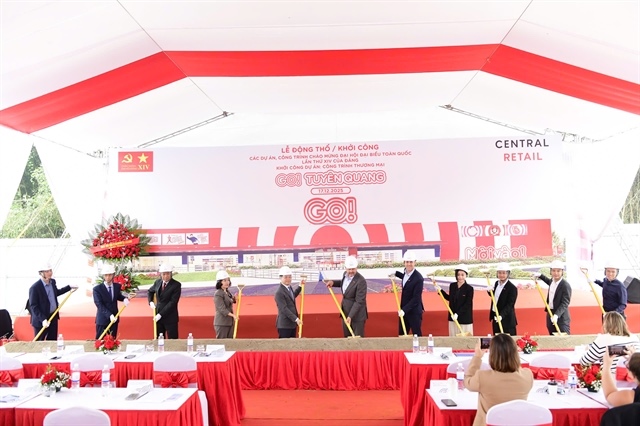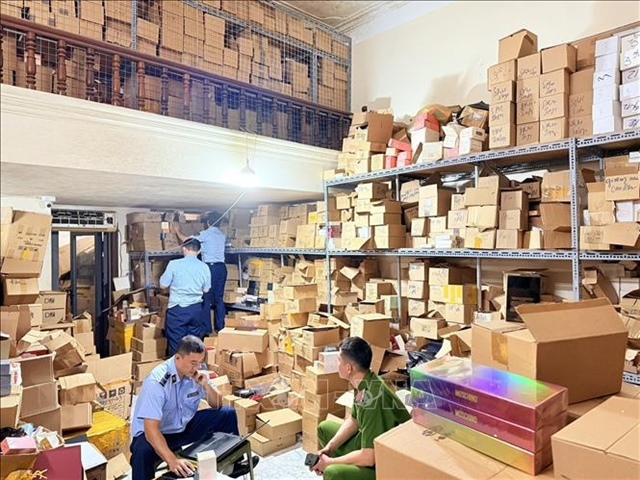Busting out newest tech to aid Vietnam’s turn towards the sun
Busting out newest tech to aid Vietnam’s turn towards the sun
As Vietnam takes strong steps to develop its solar energy market, GE is bringing in advanced technology solutions to help the country unlock its solar potential.

A market with stellar prospects
The fast-growing Vietnamese economy is starting to feel an increasing pressure to secure the necessary energy supplies. After over-reliance on conventional resources such as coal, hydropower, and gas to ensure energy security, Vietnam is aiming for a more balanced energy mix by expanding its renewables capacity in the long term. Solar energy is gaining momentum due to the falling costs of solar technology and the global drive to switch to renewable energy.
In fact, Vietnam has a high potential for solar energy production, with 1,600-2,700 sunlight hours per year and an average direct normal irradiance of 4-5 kilowatt-hours (kWh) per square metre, per day. Solar irradiation levels are comparable to most countries in the region, including developed solar markets like China, Thailand, and the Philippines, as well as to mature international solar markets such as Spain and Italy.
According to the National Power Development Plan (PDP 7), solar power is expected to become the main form of renewable energy, with the installed capacity to be increased from around 6-7 megawatts (MW) by the end of 2017 to 850MW by 2020 and 12,000MW by 2030, equivalent to 1.6 and 3.3 per cent of the country’s total power generation capacity, respectively.
To facilitate this goal, the Vietnamese government has issued a number of incentives to encourage investment in solar energy. In April 2017, the government introduced the first Vietnamese legislation for solar power development (Decision No.11/2017/QD-TTg), which sets the price for solar electricity at 9.35 US cents/kWh.
Following the issuance of Decision 11, in September 2017, the Ministry of Industry and Trade officially released Circular No.16/2017/TT-BCT on project development and a standardised power purchase agreement (PPA) for solar power projects. The issuance of the new feed-in tariff and solar PPA have laid out a conducive legal framework to lure private investment into the Vietnamese solar energy market.
On the back of supportive regulations, enthusiasm for solar energy has grown significantly in the past years. The number of local and foreign companies looking to develop solar projects in Vietnam is growing at a rapid pace. The next step is to choose suitable technology to turn this solar dreamscape into a reality.
Leveraging the 1,500-volt system advantage
The PV inverters that convert the sun’s energy (DC) into grid power (AC) have been the focus of some of the most radical innovations of all. That’s because increasing the voltage will deliver greater energy output per square metre, in turn ensuring farms require less infrastructure and land to operate efficiently. So, inverters that were once typically built to a 1-kilovolt (kV) specification a few years ago are being swiftly superseded by the 1.5kV standard first launched by GE in 2012.
When coupled with a matching 330Wp PV module, 1.5kV (1,500v) inverters can help deliver up to 3 per cent and 15 per cent reductions in system and operational costs,
respectively. Their efficiency and cost advantages are now seeing GE’s 1,000v roll-out widely replacing “standard” 1kV kits across the world, and first deployments are live in many Asian countries including Japan and India. As a result, many solar farm operators are adopting 1,500v to reduce costs and enhance returns on investment.
But just as solar generation hardware advances, so do the possibilities opened up by the new world of IoT that will see $50 billion worth of assets connected to the internet by 2020.
Real-time, big data-informed intelligence and analytics are set to redefine solar performance and productivity expectations by automating and optimising predictive maintenance and monitoring across every item of solar plant hardware. The outcome is reduced costs and downtime – plus greater productivity – in an industry where replacing just one faulty part has previously meant days of disruption and lost output.
The lack of data and smart use of data has historically translated into lost profit for solar projects – for example: contingency reserves around 5 per cent of capex, overspend on data-blind operation-and-maintenance contracts around 8 per cent of revenue, and/or kWh losses between 1-3 per cent of revenue. The increased performance, and lower costs offered by digitalisation is changing the game for the solar industry, and further strengthening its position in the global energy lineup.
As the solar PV market expands exponentially – alongside the complexities of ever-larger farms and challenges around grid stability – plant developers, investors, owners, and operators are looking for ways to minimise risk and deliver the best return.
That’s why the industry is evolving to embrace integrated systems, an approach central to the way GE interacts with the full width of the utility-scale solar PV ecosystem. It means GE is working with customers to bring turn-key electrical solutions from the Solar Module to the HV substation including PV modules, inverter, balance of plant, SCADA plant control, grid compliance and HV substation connections along with working with local companies to deliver the complete Solar EPC offering in Vietnam. GE adds to that a fully flexible digitally enabled service offer to guarantee long-term performance.
Opportunities on the horizon
Similar to Vietnam, Dubai in the United Arab Emirates is one of the best places to generate solar power thanks to the city’s abundant and strong sunlight. GE is helping Dubai Electricity and Water Authority to build a massive solar power plant in the desert surrounding Dubai.
The plant, called Mohammed bin Rashid Al Maktoum Solar Park, is a three-stage project. Upon completion in 2030, it will be the largest such installation in the region, generating up to 5,000MW.
The second stage of the project, which uses GE technology, is now generating up to 200MW of electricity. This should be enough to power more than 30,000 homes and offset 250,000 tonnes of carbon dioxide every year.
However, the ambient temperature in Dubai reaches 50 degrees Celsius, making it a significant challenge for engineers to create a construct that can withstand such harsh conditions. One of GE’s major advantages in extreme environmental conditions is GE inverters, which can operate at high temperature with very high efficiency.
As GE’s 1,500v inverters enable a simplified farm design and require less plant infrastructure compared to its 1,000v peers, it will be used in the third phase of the solar park and help produce energy at 2.99 US cent per kWh, which will be the cheapest form of energy in Dubai, overtaking traditional fuels.
With reliable solar technology, GE is helping Dubai to unlock the sun’s power and change the fuel source equation. In a similar fashion, GE is committed to bringing in the latest technology and best practices to drive the Vietnamese solar power market forward.




















